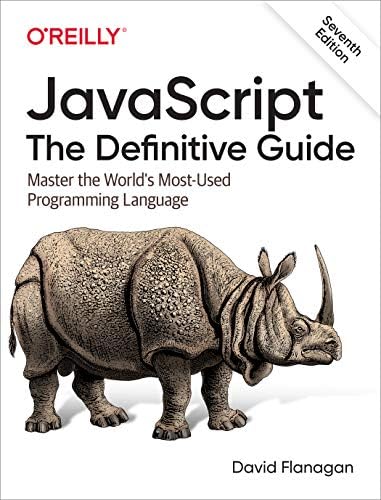JavaScript - The Definitive Guide

JavaScript: The Definitive Guide by David Flanagan is truly the JavaScript bible that every serious developer should have in their library. This 7th edition, released in 2020, fully covers modern JavaScript features, including ES6 evolutions and beyond, making it an indispensable reference.
I undertook reading this book to solidify my knowledge in JavaScript and understand the internal mechanisms of the language more deeply. With its 706 pages, it’s not a book you read in one sitting, but rather a reference you dive into regularly.
Structure and Content
What I particularly appreciate about this book is its logical progression. Flanagan starts with the fundamentals before exploring more advanced concepts such as:
- Types and values in JavaScript
- Expressions and operators
- Functions and closures (an essential but often misunderstood concept)
- ES6 classes and modules
- Asynchronous programming with promises and async/await
- Metaprogramming with Proxies and Reflect
Each chapter is accompanied by concrete examples that perfectly illustrate the concepts discussed. It’s not just a technical manual, but also a guide that explains the “why” behind the “how.”
Strengths
The strength of this work lies in its ability to demystify the most complex aspects of JavaScript. For example, the section on the prototype system helped me understand why JavaScript is so different from classical object-oriented languages.
The chapter on asynchronous programming is particularly well-written, clearly explaining the evolution of the language from callbacks to promises and the async/await syntax.
Who is this Book For?
This is not a book for absolute beginners. It’s aimed at developers who already have practical experience with JavaScript and who want to deepen their understanding. If you’ve already written JavaScript code but often wonder “why does it work like that?”, this book is for you.
Impact on My Practice
Since reading this book, my way of writing JavaScript has radically changed. I’m more attentive to type handling, I make better use of lexical closures, and I now understand why certain patterns are preferable to others.
The chapter on performance optimization has also helped me write more efficient code, avoiding common pitfalls that can slow down execution.
Conclusion
If you’re a web or JavaScript developer, this book is a worthwhile investment. It’s not a light read, but rather a companion that will accompany you throughout your journey with JavaScript. Personally, I continue to return to it regularly when I encounter complex problems or need to clarify certain concepts.
“In order to understand JavaScript, you need to understand its types, values, and variables.”
This simple but powerful phrase from the book well summarizes Flanagan’s methodical approach to mastering this sometimes perplexing language.